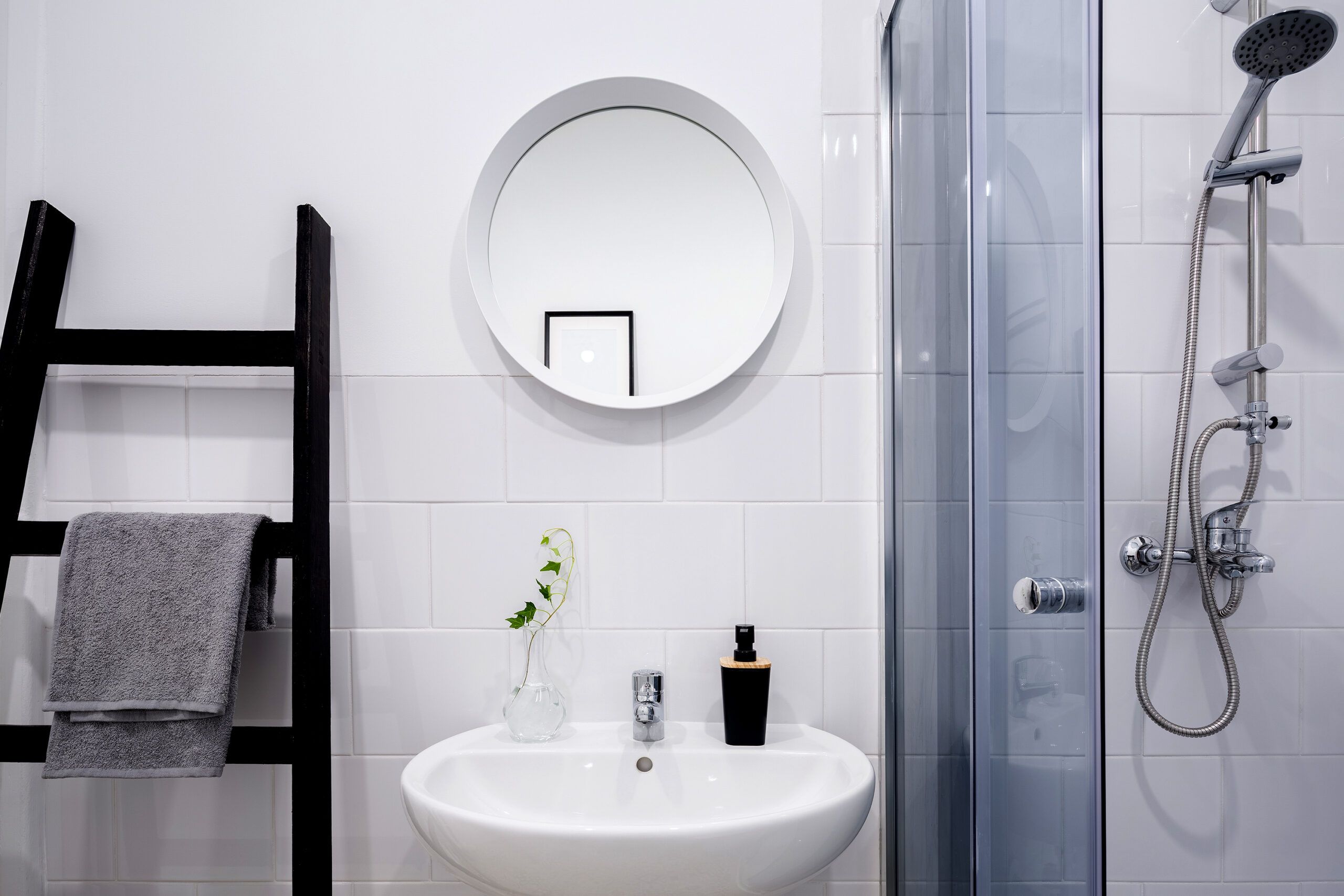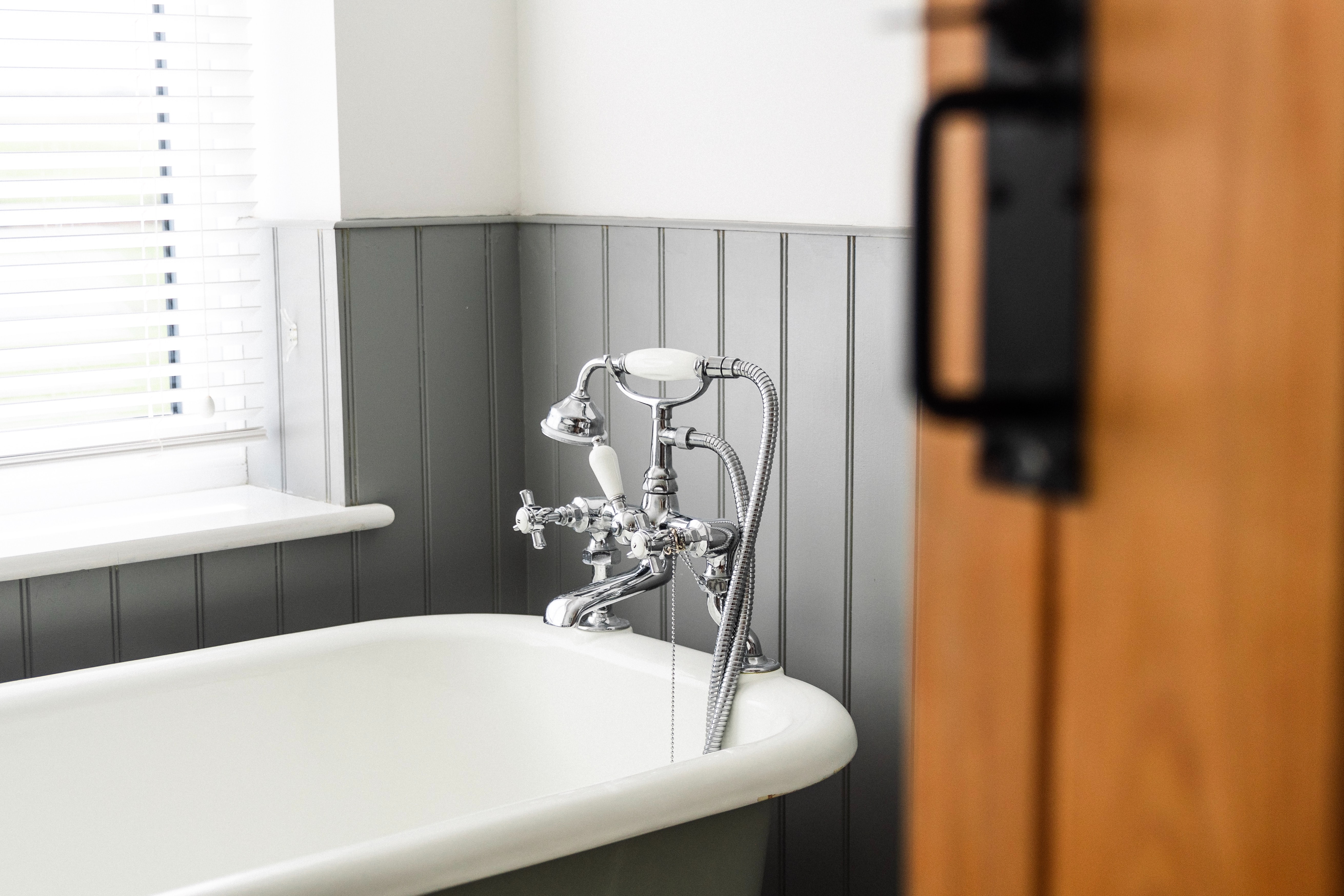The minimum width for a bathroom door is typically 24 inches. ADA standards recommend a width of 32 inches for accessibility.
Designing a practical and welcoming bathroom involves careful consideration of door dimensions to ensure both functionality and compliance with building codes. Narrow bathroom doors must balance space-saving benefits with the need for comfortable access. For most interior bathroom doors, the standard minimum width is 24 inches, as a narrower door can restrict access and make it challenging to move in and out, especially with bathroom necessities in hand.
To be ADA-compliant and accommodate wheelchairs or walkers, a door width of at least 32 inches is recommended. Homeowners and builders must also consider local building regulations, which may dictate the minimum door size for safety and accessibility. Proper bathroom door sizing helps create a safe and comfortable environment for all users while facilitating efficient use of space.
Introduction To Bathroom Door Sizing
Selecting the right size for a bathroom door is crucial for both functionality and accessibility. A door that is too narrow can impede movement, especially for someone using mobility aids, while a door that is too wide may not be practical in tight spaces. Standard door sizes generally begin at 24 inches wide, which is the minimum for many building codes. Nevertheless, for those with accessibility needs, the Americans with Disabilities Act (ADA) recommends a minimum width of 32 inches to ensure ease of access for wheelchairs.
Different factors can affect the optimal width of a bathroom door, including the bathroom’s layout, existing structural conditions, and homeowner preferences. It’s important to consider the overall design and usability of the space, making sure that the door width complements the bathroom’s dimensions and allows for comfortable use by all potential users.

Credit: www.thisoldhouse.com
Minimum Size Requirements For Bathroom Doors
The International Building Code (IBC) typically requires that bathroom doors have a minimum width of 32 inches. This standard ensures that most individuals, including those using wheelchairs, can access the facility. On the other hand, Americans with Disabilities Act (ADA) Compliance mandates a minimum door width of 36 inches for commercial facilities to accommodate wheelchair access. Residential properties often follow the IBC standards, but builders might opt for wider doorways in consideration of ADA guidelines to enhance accessibility.
Residential vs. Commercial Bathrooms: Regulations vary considerably. Commercial bathrooms must adhere strictly to ADA standards, whereas residential bathroom door widths can sometimes be narrower if local building codes permit. It’s crucial to check with local code requirements as they can supersede the IBC, particularly on residential projects.
Optimizing Bathroom Door Size For Different Scenarios
A bathroom door’s width can be a critical feature in maximizing space within a small bathroom. Standard door sizes typically measure 24 inches to 36 inches, but minimizing the door width can free up valuable square footage. In cases where space is a prime concern, a 24-inch door may suffice, although accessibility should not be compromised. It’s important to consider regulations, such as the Americans with Disabilities Act (ADA) guidelines, which recommend a minimum of 32 inches for bathroom doorways to accommodate wheelchairs.
For family use, prioritizing wide doorframes enhances comfort and access. This is particularly significant in homes with children or elderly family members, ensuring that family bathrooms are user-friendly and accessible. The custom sizing of bathroom doors becomes pertinent when dealing with unique layouts or design challenges. Flexibility in door dimensions allows homeowners to craft functional spaces that fit their personalized needs while ensuring that the space remains comfortable for all users.
Additional Considerations For Bathroom Door Design
Selecting the appropriate door type for your bathroom is critical for both functionality and design. Pocket doors are excellent for maximizing space, as they slide into the wall and don’t require clearance for opening. Bi-fold doors, on the other hand, offer a space-saving solution while still providing the perception of a more traditional door. For those with fewer space constraints, standard swing doors remain popular and can be designed to open inward or outward, depending on the spatial layout and preferences.
With regard to materials, it’s essential to choose options that can withstand the bathroom’s moist environment. Solid wood, fiberglass-composite, and even certain types of laminate can offer both the desired aesthetics and the practicality needed for durability. It is important to balance both aspects to ensure long-term satisfaction with the bathroom’s appearance and function.
Privacy and sound insulation are paramount when deciding on the size of your bathroom door. Proper door sizing not only ensures personal privacy but also enhances acoustic insulation, allowing for a quiet and comfortable space. Consideration of these factors during the design phase will contribute to a well-constructed and comfortable bathroom environment.
Final Thoughts: Balancing Code Requirements And User Needs
Selecting the right door size for a bathroom is a critical decision that affects both the functionality and aesthetics of the space. The minimum width permissible by the International Residential Code (IRC) is 24 inches, but for comfort and accessibility, a width of at least 32 inches is recommended. Smaller doors can make furniture movement challenging and can feel restrictive to users.
It’s essential to consider the impact of the door size on the bathroom’s overall design. A door that’s too narrow can create accessibility issues, particularly for people who use mobility aids. It also can make the bathroom feel cramped and less inviting. On the flip side, a door that’s too wide can consume valuable wall space, reducing the area available for fixtures and storage.
Homeowners and builders should weigh the importance of meeting building codes with the needs and comfort of users. A balance must be struck between strict adherence to regulations and the practical considerations of daily use. Professional advice is recommended to make the most informed decision on bathroom door sizing, taking into account the unique layout and requirements of each individual project.
:max_bytes(150000):strip_icc()/in-dimensions-for-shower-door-1822561-hero-7c94eceea3704a99bf1da36697a9ce62.jpg)
Credit: www.thespruce.com

Credit: www.expressdoorsdirect.co.uk
Frequently Asked Questions Of How Narrow Can A Bathroom Door Be
What Is The Narrowest Door Allowed?
The narrowest door allowed in building codes typically measures 32 inches in width, ensuring accessibility for most users.
What Is The Narrowest A Door Can Be?
The minimum width for a residential door is commonly 24 inches. Building codes may differ, so always check local requirements.
Why Are Bathroom Doors Narrower?
Bathroom doors are often narrower to save space, allowing for more efficient use of limited bathroom square footage and accommodating typical bathroom fixtures.
What Is The Smallest Door Opening Allowed?
The smallest permissible door opening is typically 32 inches wide by 80 inches tall, accommodating accessibility standards.
Conclusion
Navigating the specifications for bathroom door widths is crucial. Aim for the minimum required 24 inches but consider comfort and accessibility standards. Thoughtful planning ensures a functional, compliant bathroom design. Remember, door dimensions impact usability for all family members. Choose wisely for a harmonious home environment.



